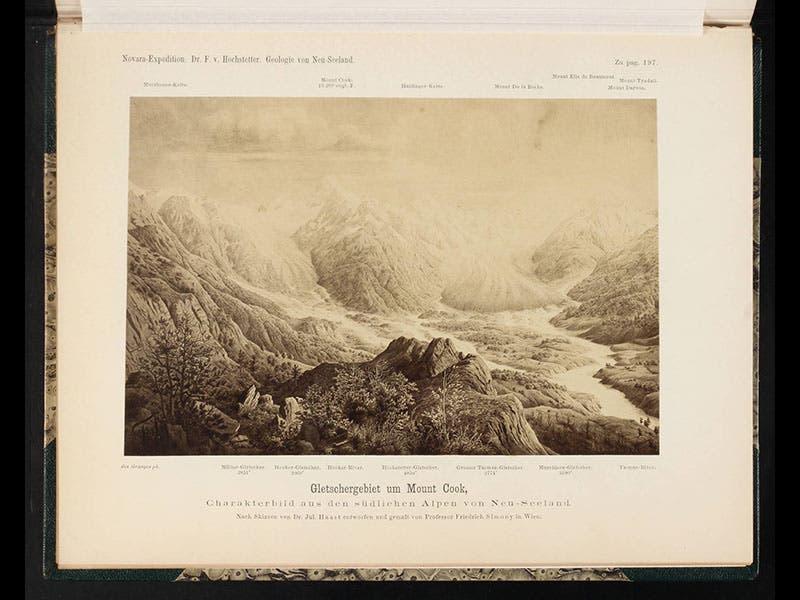Scientist of the Day - Ferdinand Ritter von Hochstetter
Ferdinand Ritter von Hochstetter, a German/Austrian geologist, was born Apr. 30, 1829. In 1856, Hochstetter was selected as the geologist for the Novara expedition, the first scientific voyage ever sponsored by Imperial Austria, which circumnavigated the globe in 1857-59. The Novara was a large frigate, much bigger than Darwin's Beagle, and had entered the Austrian navy in 1849, when Austria recaptured Venice and the Arsenal shipyard where the Novara was being built, changing her name from Italia to Novara. For the 1857 expedition, seven scientists were taken on board, and Hochstetter would prove to be the most accomplished. He made the first geological survey ever of New Zealand, which is geologically very complex, as it lies right on a plate boundary and so experiences considerable volcanic and geothermal activity. After the Novara returned, the scientific results were written up and published in 21 parts as the Reise der österreichischen Fregatte Novara um die Erde (Narrative of the Voyage Around the World by the Austrian frigate Novara, 1861-75), which we have in our collection. Hochstetters' Geology of New Zealand (1864) in 2 volumes, was published as part of this set.
Hochstetter’s volumes contain a number of views of the New Zealand landscape, depicting Motu Roa on the North Island (see first image above), Mount Cook and its glaciers (second image), and hot springs at Ora Keikorako, North Island (third image). The last image is a geological map of the region around Auckland. In turn, the city of Auckland has sponsored a very nice virtual exhibition about Hochstetter, presenting several portraits of the geological exporer, young and old.
Dr. William B. Ashworth, Jr., Consultant for the History of Science, Linda Hall Library and Associate Professor, Department of History, University of Missouri-Kansas City










